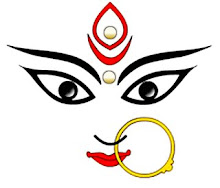28 August 2010
Temples of Chennai - Kalyana Anjaneyar Temple, Thailavaram, Chennai
``HOLD ON tight to the feet of Anjaneya Swami. He will help you,'' Guru Ramani Anna advised his ardent disciple Muralidasan who is also known as Amudhaji. The prophecy fructified two-fold, for till date not only Anjaneya Swami but also his wife Suvarchala takes care of this devotee. He, in turn, has built a temple for them on the outskirts of Chennai, in Thailavaram village, near Maraimalai Nagar on the Chennai - Tiruchi National Highway.
Yes, this God, who has always been portrayed as a staunch bachelor in ancient lore and even in the Adikavya — the Ramayana of Valmiki, is believed to have a wife. The propagators of this school of thought quote from ancient texts to substantiate their belief. A story pertaining to this is given in verses 8-14 in a Sanskrit text called the Parasara Samhita and unfolds as follows:
In the city of Kundeenam, lived a pious Brahmin called Dhvajadatta. Though well versed in the Vedas and other sacred lore he was poor. Unable to bear it any further and in search of divine help, he approached a rishi called Pushkara. The sage was an ardent devotee of Lord Anjaneya. Hence, as an infallible solution to Dhvajadatta's woes, he initiated him into the worship of Hanuman with a twelve-syllable mantra called the Suvarchala Hanumath Dvadashakshara mantra.
Dhvajadatta recited the mantra but there were two major flaws in the process. First, he did not meditate on his guru before reciting the mantra and second, he lacked an unquestionable faith so necessary in such spiritual exercises. Naturally the mantra was not efficacious and a dejected Dhvajadatta blamed the failure on his guru.
At this time, a tribal man plagued by illness approached Dhvajadatta and requested him for a remedy. Dhvajadatta, incourse of the conversation, related his own woes and warned him not to approach rishi Pushkara. But the tribal did just that and, on the advice of the rishi, recited the Suvarchala-Hanumath mantra with utmost faith. Soon he was cured of his disease.
This came as a blow to Dhvajadatta, who through a process of self-introspection realised his folly. He now resumed his spiritual practices with a firm faith in his guru and was blessed with a vision of Lord Anjaneya, along with his consort Suvarchala, seated on a camel.
A verse in a sloka called `Hanuman Mangalashtakam' depicts the Lord thus and runs as follows:
"`Suvarchalaa kalathraaya chaturbhuja dharaaya cha
Ushtraa roodhaya veeraya mangalam Sri Hanumathe.''
The meaning is: ``Salutations to Lord Hanuman, having four arms, accompanied by His consort Suvarchala Devi, seated on a camel and exhibiting extraordinary valour.''
The text further describes Suvarchala as the daughter of Sun-God, Surya, from whom Anjaneya learnt the Vedas.
Interestingly, it was this very sloka that caught the attention of Sri Muralidasan Swami during the course of his Anjaneya Upasana. When he set about finding the details of this little known description of the Lord, he was told that there was a temple in Ongole in Andhra Pradesh that had a shrine for nine forms of Anjaneya and one of them was Suvarchala Anjaneya.
Further, he was also given the additional information that, a temple for Goddess Kanyaka Parameswari at Masulipatnam also houses a sculpture of this form of the Lord. A visit to Ongole by Muralidasan Swami yielded more information on the Lord.
He brought out the details in a book titled `Nava Anjaneya Charitram' [the story of the nine forms of Anjaneya].
At the temple at Thailavaram, the moolavar is eight feet tall. The Lord holds the customary mace in his hand that he rests on his right shoulder. His left hand is placed on his hip. The utsava moorthi of Anjaneya is with his consort Suvarchala Devi. The Lord is depicted with four arms and is descriptively called Suvarchala Devi Sametha Chaturbhuja Subhamangala Varada Anjaneya Swami. This is a small temple but has an enormous bell about 32 feet high. The top portion of the bell, measures 18 feet with a flag at its mast. The 18 feet concept is said to stand for the 18 chapters of the `Bhagavad Gita.'
The bell called Ghanta Sthamba also functions as a sannidhi for Lord Rama with his consort Sita and brother Lakshmana. The utsava moorthi of this Lord blesses the devotees. The moola vigraham, housed deep inside the bell and not visible to the visitor, is made of Rosewood.
At the base of the bell are four small statues of Anjaneya, with hands folded.
This bell is said to represent the great Vaishnava Acharya, Swami Desika, who according to traditional accounts was an incarnation of the bell of the Tirumala temple.
In front of this sannidhi is a small niche that enshrines an idol of Lord Sundara Bhakta Anjaneya. It is this vigraha that was being worshipped by Sri Muralidasan Swami during his foray into spirituality.
This temple was consecrated on June 30, 1999, by Sri Ramani Anna Swamy who is also responsible for the famous Hanuman temple at Nanganallur with its 32 feet tall Anjaneya Swami.
But it was only in February 2004 that the utsava moorthi of Kalyana Anjaneya was consecrated by Sri Namananda Giri of the Sadguru Gnanananda Peetam. Interestingly, Hanumath Jayanthi, celebrated customarily throughout the South in December, is celebrated here in the Tamil month of Vaikasi [May 15-June 15]
Sri Muralidasan Swami holds, again on the basis of certain Sanskrit texts, that this is actually the month when Anjana Devi gave birth to Lord Anjaneya.
However, Margazhi Moolam can also be considered as His birthday as it was on this day that Hanuman recovered from the massive blow, given by Indra with his Vajrayudha [thunderbolt], when He went to capture the Sun.
Indeed this temple does afford us a fresh look at Hanuman in more ways than one.
[Courtesy:Hindu]
Yes, this God, who has always been portrayed as a staunch bachelor in ancient lore and even in the Adikavya — the Ramayana of Valmiki, is believed to have a wife. The propagators of this school of thought quote from ancient texts to substantiate their belief. A story pertaining to this is given in verses 8-14 in a Sanskrit text called the Parasara Samhita and unfolds as follows:
In the city of Kundeenam, lived a pious Brahmin called Dhvajadatta. Though well versed in the Vedas and other sacred lore he was poor. Unable to bear it any further and in search of divine help, he approached a rishi called Pushkara. The sage was an ardent devotee of Lord Anjaneya. Hence, as an infallible solution to Dhvajadatta's woes, he initiated him into the worship of Hanuman with a twelve-syllable mantra called the Suvarchala Hanumath Dvadashakshara mantra.
Dhvajadatta recited the mantra but there were two major flaws in the process. First, he did not meditate on his guru before reciting the mantra and second, he lacked an unquestionable faith so necessary in such spiritual exercises. Naturally the mantra was not efficacious and a dejected Dhvajadatta blamed the failure on his guru.
At this time, a tribal man plagued by illness approached Dhvajadatta and requested him for a remedy. Dhvajadatta, incourse of the conversation, related his own woes and warned him not to approach rishi Pushkara. But the tribal did just that and, on the advice of the rishi, recited the Suvarchala-Hanumath mantra with utmost faith. Soon he was cured of his disease.
This came as a blow to Dhvajadatta, who through a process of self-introspection realised his folly. He now resumed his spiritual practices with a firm faith in his guru and was blessed with a vision of Lord Anjaneya, along with his consort Suvarchala, seated on a camel.
A verse in a sloka called `Hanuman Mangalashtakam' depicts the Lord thus and runs as follows:
"`Suvarchalaa kalathraaya chaturbhuja dharaaya cha
Ushtraa roodhaya veeraya mangalam Sri Hanumathe.''
The meaning is: ``Salutations to Lord Hanuman, having four arms, accompanied by His consort Suvarchala Devi, seated on a camel and exhibiting extraordinary valour.''
The text further describes Suvarchala as the daughter of Sun-God, Surya, from whom Anjaneya learnt the Vedas.
Interestingly, it was this very sloka that caught the attention of Sri Muralidasan Swami during the course of his Anjaneya Upasana. When he set about finding the details of this little known description of the Lord, he was told that there was a temple in Ongole in Andhra Pradesh that had a shrine for nine forms of Anjaneya and one of them was Suvarchala Anjaneya.
Further, he was also given the additional information that, a temple for Goddess Kanyaka Parameswari at Masulipatnam also houses a sculpture of this form of the Lord. A visit to Ongole by Muralidasan Swami yielded more information on the Lord.
He brought out the details in a book titled `Nava Anjaneya Charitram' [the story of the nine forms of Anjaneya].
At the temple at Thailavaram, the moolavar is eight feet tall. The Lord holds the customary mace in his hand that he rests on his right shoulder. His left hand is placed on his hip. The utsava moorthi of Anjaneya is with his consort Suvarchala Devi. The Lord is depicted with four arms and is descriptively called Suvarchala Devi Sametha Chaturbhuja Subhamangala Varada Anjaneya Swami. This is a small temple but has an enormous bell about 32 feet high. The top portion of the bell, measures 18 feet with a flag at its mast. The 18 feet concept is said to stand for the 18 chapters of the `Bhagavad Gita.'
The bell called Ghanta Sthamba also functions as a sannidhi for Lord Rama with his consort Sita and brother Lakshmana. The utsava moorthi of this Lord blesses the devotees. The moola vigraham, housed deep inside the bell and not visible to the visitor, is made of Rosewood.
At the base of the bell are four small statues of Anjaneya, with hands folded.
This bell is said to represent the great Vaishnava Acharya, Swami Desika, who according to traditional accounts was an incarnation of the bell of the Tirumala temple.
In front of this sannidhi is a small niche that enshrines an idol of Lord Sundara Bhakta Anjaneya. It is this vigraha that was being worshipped by Sri Muralidasan Swami during his foray into spirituality.
This temple was consecrated on June 30, 1999, by Sri Ramani Anna Swamy who is also responsible for the famous Hanuman temple at Nanganallur with its 32 feet tall Anjaneya Swami.
But it was only in February 2004 that the utsava moorthi of Kalyana Anjaneya was consecrated by Sri Namananda Giri of the Sadguru Gnanananda Peetam. Interestingly, Hanumath Jayanthi, celebrated customarily throughout the South in December, is celebrated here in the Tamil month of Vaikasi [May 15-June 15]
Sri Muralidasan Swami holds, again on the basis of certain Sanskrit texts, that this is actually the month when Anjana Devi gave birth to Lord Anjaneya.
However, Margazhi Moolam can also be considered as His birthday as it was on this day that Hanuman recovered from the massive blow, given by Indra with his Vajrayudha [thunderbolt], when He went to capture the Sun.
Indeed this temple does afford us a fresh look at Hanuman in more ways than one.
[Courtesy:Hindu]
Subscribe to:
Post Comments (Atom)


























No comments:
Post a Comment